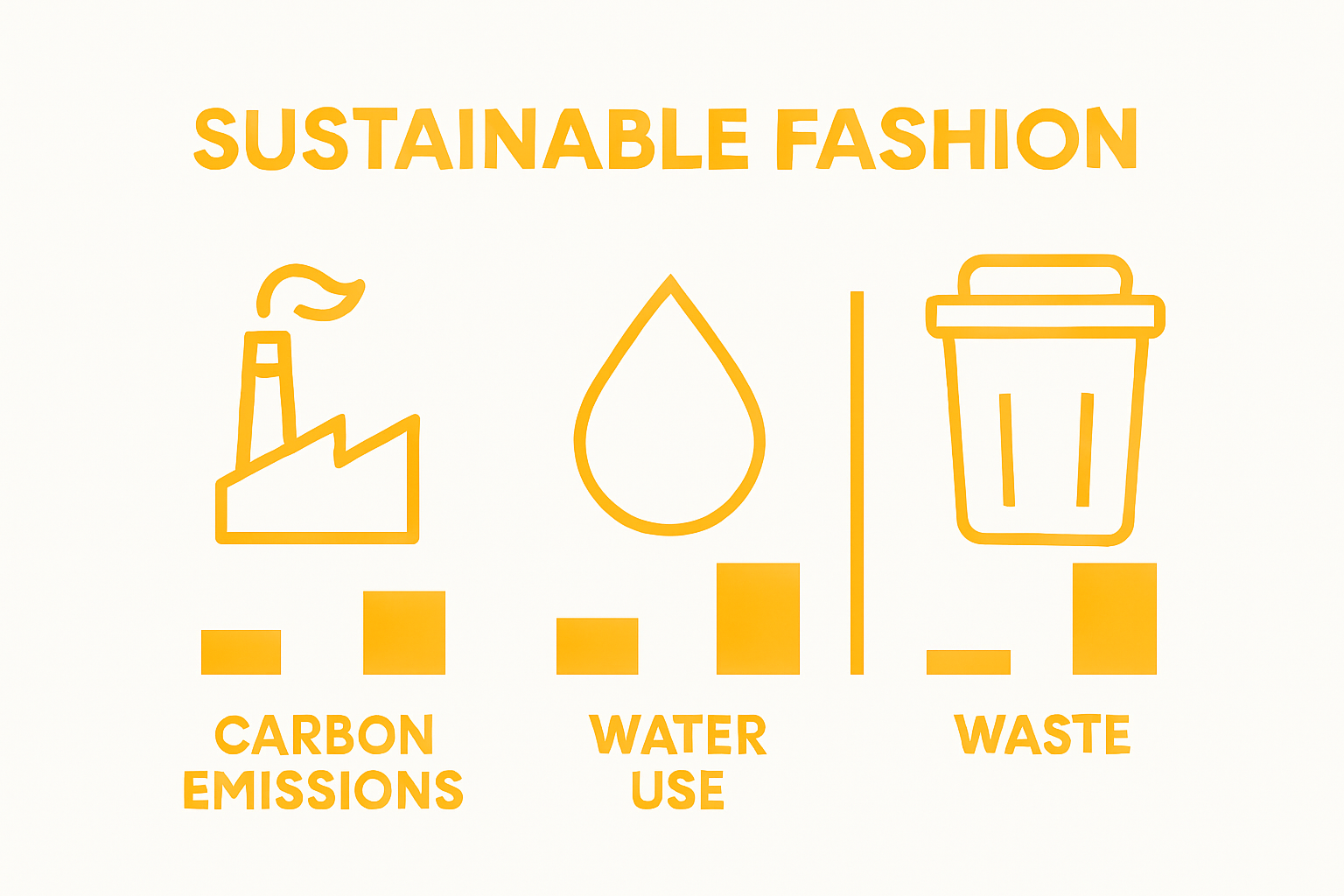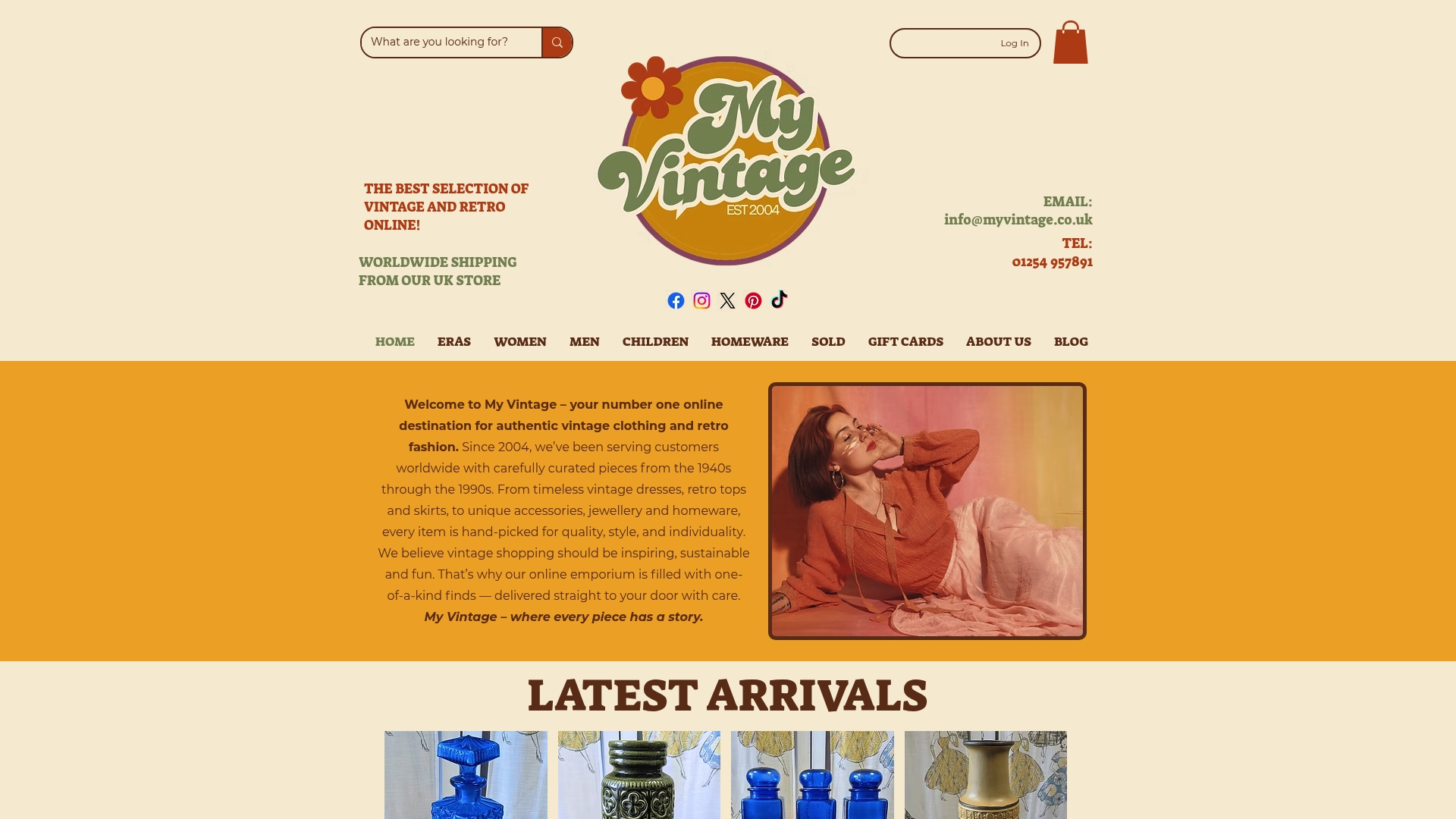Understanding the Advantages of Sustainable Fashion
- Emma

- Sep 15
- 8 min read

Sustainable fashion is challenging everything we thought we knew about clothes, placing environmental care, social responsibility, and economic ethics at its very core. Shockingly, the fashion industry is responsible for around 10 percent of global carbon emissions and produces 92 million tonnes of textile waste each year. Yet what stands out most is not just the size of the problem but the scale of the solution. Sustainable fashion goes far beyond eco-friendly fabrics, reshaping the entire journey of our clothing from start to finish.
Table of Contents
Quick Summary
Takeaway | Explanation |
Sustainable fashion prioritises environmental and social ethics | It focuses on producing clothing that is ecologically friendly and socially responsible, challenging fast fashion norms. |
Circular design is essential for sustainability | Garments should be created with their entire lifecycle in mind, allowing for recycling and biodegradation at end-of-life. |
Transparency fosters ethical production | Supply chains must be fully visible to ensure responsible practices in the manufacturing process, enhancing consumer trust. |
Quality garments outlast fleeting trends | Emphasising durable and timeless pieces reduces overall consumption and waste, supporting long-term sustainability. |
Consumer engagement transforms fashion relationships | By promoting mindful consumption and community workshops, sustainable fashion encourages deeper connections with clothing and its impact. |
What is Sustainable Fashion and its Core Principles?
Sustainable fashion represents a holistic approach to clothing production, consumption, and lifecycle management that prioritises environmental protection, social responsibility, and ethical economic practices. Unlike traditional fast fashion models, sustainable fashion seeks to minimise negative ecological and human impacts while creating high-quality, enduring clothing solutions.
Defining Sustainable Fashion
At its core, sustainable fashion is about reimagining the entire textile and clothing ecosystem. According to Centre for Sustainable Fashion, this approach integrates multiple critical dimensions:
Environmental Stewardship: Reducing carbon footprints, minimising waste, and protecting natural resources
Social Equity: Ensuring fair labour practices and safe working conditions throughout the supply chain
Economic Viability: Creating business models that support long-term sustainability without compromising profitability
Key Principles of Sustainable Fashion
The fundamental principles guiding sustainable fashion extend far beyond simple material selection. These principles encompass comprehensive strategies that transform how clothing is designed, produced, consumed, and ultimately disposed of.
Key principles include:
Circular Design: Creating garments with their entire lifecycle in mind, including eventual recycling or biodegradation
Transparent Supply Chains: Providing complete visibility into production processes, ensuring ethical and environmentally responsible manufacturing
Quality over Quantity: Emphasising durable, timeless pieces that transcend seasonal trends
The UK government’s Sustainable Clothing Action Plan underscores the importance of comprehensive strategies that address not just production, but also consumer behaviour and market incentives. This holistic approach recognises that sustainable fashion requires collaboration across designers, manufacturers, retailers, and consumers.
Ultimately, sustainable fashion is not a passing trend but a critical response to the environmental and social challenges posed by traditional textile and clothing industries. It represents a profound shift towards more conscious, responsible, and thoughtful approaches to what we wear and how we consume fashion.
To clarify the foundational distinctions and focus areas, the following table compares the core principles of sustainable fashion outlined earlier in the article.
Principle | Focus Area | Example from Article |
Environmental Stewardship | Reducing carbon, waste, and protecting resources | Minimising waste, eco-friendly production |
Social Equity | Ensuring fair labour, safe conditions | Fair wages, community development |
Economic Viability | Supporting business longevity and responsible profit | Sustainable business models, market incentives |
Why Does Sustainable Fashion Matter in Today’s World?
In an era of escalating environmental challenges and growing social consciousness, sustainable fashion has emerged as a critical response to the profound ecological and human rights issues embedded within traditional textile and clothing industries.
The Environmental Crisis in Fashion
The fashion industry represents one of the most environmentally destructive sectors globally, responsible for significant carbon emissions, water pollution, and waste generation. According to research from the Journal of Cleaner Production, fashion design plays a pivotal role in mitigating these environmental impacts through strategic and thoughtful approaches.
Key environmental challenges include:

Massive Carbon Footprint: The fashion industry generates approximately 10% of global carbon emissions
Water Contamination: Textile production contributes significantly to water pollution through chemical treatments and dyeing processes
Waste Accumulation: An estimated 92 million tonnes of textile waste are produced annually worldwide
Social and Economic Implications
Sustainable fashion transcends environmental concerns, addressing critical social and economic dimensions. It represents a comprehensive approach to reimagining clothing production as a mechanism for positive social transformation.
Critical social considerations encompass:
Worker Welfare: Ensuring fair wages, safe working conditions, and eliminating exploitative labour practices
Community Development: Supporting local economies and traditional craftsmanship
Economic Resilience: Creating business models that prioritise long-term sustainability over short-term profits
Research exploring social enterprises in East London demonstrates how innovative fashion approaches can integrate social, environmental, and economic objectives, providing compelling evidence of sustainable fashion’s broader societal impact.
Sustainable fashion matters because it represents more than a trend—it’s a fundamental reimagining of our relationship with clothing. By challenging existing production models, promoting ethical consumption, and prioritising holistic well-being, sustainable fashion offers a powerful pathway towards a more responsible and conscious global textile ecosystem.
The following table organises key environmental statistics and impacts of the fashion industry, as discussed previously, to provide a concise reference for the scale of the problem.
Environmental Impact | Data/Statistic | Source/Context |
Global Carbon Emissions | Approx. 10% of global emissions | Textile manufacturing and transport |
Textile Waste | 92 million tonnes annually | Worldwide clothing disposal |
Water Pollution | Significant contribution from chemical/dye processes | Result of textile production |
Reduction Potential | Up to 60% reduction possible with sustainable practices | Sustainable approaches outlined in research |
How Sustainable Fashion Positively Impacts the Environment
Sustainable fashion represents a transformative approach to mitigating environmental damage through innovative design, production, and consumption strategies that fundamentally challenge traditional textile industry practices.
Reducing Carbon and Ecological Footprints
The environmental benefits of sustainable fashion extend far beyond simple material choices. According to research from the Leeds Institute of Textiles and Colour, comprehensive approaches can dramatically reduce the ecological impact of clothing production.
Key environmental advantages include:
Decreased Carbon Emissions: Sustainable practices can reduce greenhouse gas emissions by up to 60% compared to conventional manufacturing
Water Conservation: Eco-friendly production methods significantly reduce water consumption and contamination
Waste Minimisation: Circular design principles dramatically reduce textile waste through recycling and upcycling strategies
Innovative Material and Production Strategies
Sustainable fashion introduces revolutionary approaches to material selection and manufacturing processes. These strategies focus on minimising environmental harm while maximising resource efficiency and product longevity.
Critical environmental innovation approaches include:
Organic and Recycled Materials: Using renewable, low-impact fabrics that require minimal resource extraction
Energy-Efficient Manufacturing: Implementing production techniques that reduce overall energy consumption
Closed-Loop Production Systems: Creating manufacturing processes that regenerate and reuse materials continuously
By prioritising environmental stewardship, sustainable fashion offers a comprehensive solution to the textile industry’s ecological challenges. It demonstrates that responsible design can simultaneously address environmental protection, economic viability, and consumer needs, presenting a holistic model for future clothing production.
The Social Advantages of Choosing Sustainable Fashion
Sustainable fashion transcends environmental considerations, offering profound social benefits that reshape our understanding of clothing consumption, community engagement, and individual empowerment.
Empowering Workers and Communities
At its core, sustainable fashion represents a commitment to social justice and human dignity. According to research exploring social enterprises in East London, sustainable fashion initiatives create meaningful opportunities for community development and economic empowerment.
Key social impact dimensions include:
Fair Labour Practices: Ensuring safe working conditions and living wages for textile workers globally
Skill Development: Creating opportunities for vocational training and professional growth in local communities
Economic Resilience: Supporting small-scale artisans and traditional craftsmanship
Transforming Consumer Relationships with Clothing
Sustainable fashion fundamentally challenges traditional consumption patterns by promoting more meaningful, intentional interactions with clothing. Through participatory experiences and mindful consumption, individuals develop deeper connections with their wardrobe.
Transformative social practices encompass:
Experiential Learning: Engaging in activities like garment making and mending
Community Workshops: Sharing skills and knowledge about sustainable clothing practices
Personal Empowerment: Developing consciousness about individual consumption choices
By choosing sustainable fashion, consumers become active participants in a global movement that values human dignity, cultural preservation, and collective well-being.
To aid in understanding how sustainable fashion addresses both environmental and social outcomes, the table below summarises its key advantages as described in the article.
Advantage | Environmental Benefit | Social Benefit |
Circular Design | Reduces landfill waste and ecological burden | Promotes community repair and upcycling culture |
Eco-friendly Material Selection | Decreases resource use and emissions | Supports local and traditional manufacturing |
Ethical Labour Practices | Indirect support of sustainable development | Ensures worker safety and fair wages |
Consumer Mindfulness | Curtails overconsumption and waste | Empowers individuals, fosters educational growth |
This approach reimagines clothing not merely as a commodity, but as a powerful medium for social connection and positive change.
Key Concepts and Practices in Sustainable Fashion
Sustainable fashion represents a comprehensive approach to textile production that integrates environmental responsibility, ethical practices, and innovative design strategies. Understanding its fundamental concepts is crucial for transforming the global fashion industry.
Foundational Principles of Sustainable Design
According to the Fashion Retail Academy, sustainable fashion encompasses multiple interconnected dimensions that go beyond simple material selection.
Key foundational principles include:
Circular Economy Approach: Designing garments with complete lifecycle considerations
Transparency in Production: Ensuring complete visibility of manufacturing processes
Minimal Environmental Impact: Reducing carbon footprints and resource consumption
Practical Implementation Strategies
Sustainable fashion requires strategic approaches that transform traditional manufacturing and consumption patterns. This involves reimagining every stage of clothing production, from material sourcing to end-of-life management.
Critical implementation strategies encompass:
Eco-friendly Material Selection: Utilising organic, recycled, and low-impact textiles
Ethical Labour Practices: Guaranteeing fair wages and safe working conditions
Waste Reduction Techniques: Implementing zero-waste pattern cutting and upcycling methods
For fashion enthusiasts interested in delving deeper into innovative design approaches, our guide on vintage designers offers additional insights into sustainable and creative fashion practices.
By embracing these concepts and practices, sustainable fashion offers a holistic approach to clothing production that respects both environmental boundaries and human dignity, presenting a transformative model for the future of the global textile industry.

Ready to Enjoy the Real Benefits of Sustainable Fashion?
You have just discovered how crucial conscious clothing choices are in protecting the environment and supporting ethical practices. If you are feeling overwhelmed by throwaway trends or want to make a genuine difference with your wardrobe, you are not alone. We understand how it feels to want stylish, individual pieces that last without harming the planet. At My Vintage, every item is handpicked to embody the core principles of sustainable fashion used throughout this article. Experience quality over quantity by choosing vintage and retro treasures that not only tell a story but also help cut waste and promote fair trade.

Make the switch to timeless fashion today. Browse My Vintage for authentic clothing and homeware that puts responsibility first. Find something unique right now and join a community of style-conscious individuals who proudly choose a more conscious approach to fashion. Your next sustainable piece awaits.
Frequently Asked Questions
What are the core principles of sustainable fashion?
The core principles of sustainable fashion include environmental stewardship, social equity, and economic viability. These principles focus on reducing ecological impacts, ensuring fair labour practices, and creating sustainable business models.
How does sustainable fashion benefit the environment?
Sustainable fashion helps benefit the environment by reducing carbon emissions, conserving water, and minimising waste through circular design practices and eco-friendly production methods.
What impact does sustainable fashion have on workers and communities?
Sustainable fashion positively impacts workers by ensuring fair labour practices, safe working conditions, and opportunities for skill development. It also supports local economies and traditional craftsmanship.
What are some practical strategies for implementing sustainable fashion?
Practical strategies for implementing sustainable fashion include selecting eco-friendly materials, ensuring ethical labour practices, and utilising waste reduction techniques such as zero-waste pattern cutting and upcycling.
Recommended



Comments